Researchers Are Trying To Understand Why Ancient Roman Concrete Is Exceptionally Durable.

Researchers are trying to understand why ancient Roman concrete is exceptionally durable.
Over two thousand years ago, the ancient Romans built piers, breakwaters, and other structures out of concrete—and some of those structures still stand today. Now, researchers are trying to understand the chemical and geological processes that work together to give that ancient concrete such durability. Using microscopy, x-ray diffraction, and spectroscopic techniques, they’ve developed a map of the crystalline microstructures within the concrete. According to their research, a slow infusion of seawater into concrete made with a type of volcanic ash found near Rome gradually creates crystals of a material called aluminous tobermorite, which actually strengthens the concrete as it ages.
Marie Jackson, a geology and geophysics research professor and one of the authors of a report on the work, says that understanding Roman concrete could give modern materials scientists ideas for how to strengthen modern structures, and could even lead to new materials, such as concretes that soak up and trap nuclear waste.
Photo by THINK Global School/flickr/CC BY-NC-ND 2.0
More Posts from Theperpetualscholar and Others

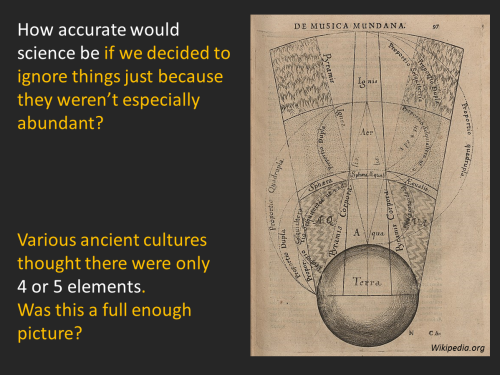

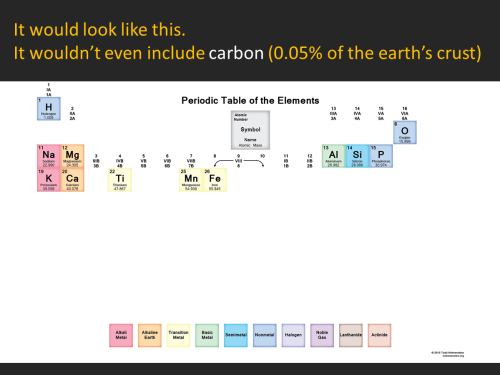
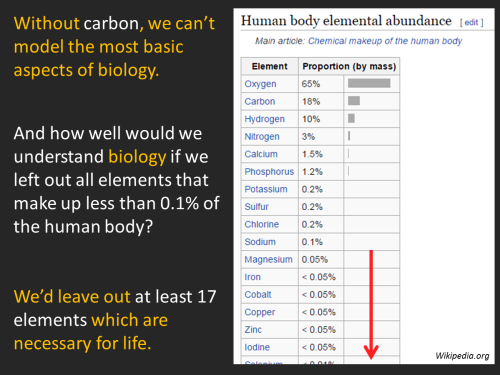




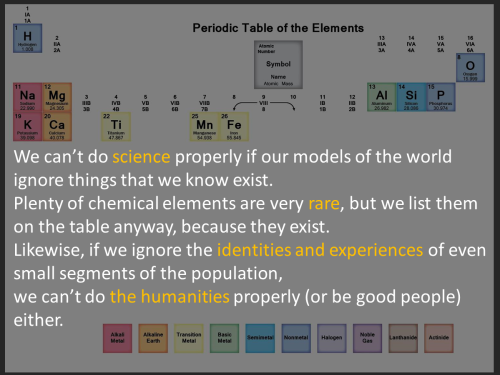
Saying that man and woman are the only genders is actually LESS nuanced than saying that earth, water, air, and fire are the only elements.






Important Questions

The eyestalk tentacles of snails are “muscular hydrostats” - the same type of structure as human tongues and elephant trunks.

Grover and Clyde
Grover Sanders Krantz was an American anthropologist and cryptozoologist. He was one of few scientists not only to research Bigfoot, but also to express his belief in the animal’s existence. Krantz’s specialty as an anthropologist included all aspects of human evolution, but he was best known outside of academia as the first serious researcher to devote his professional energies to the scientific study of Bigfoot, beginning in 1963.
When he died, his body was donated to science (as per his wish). It was used to study human body decay rates for forensic science. He had only one condition to which was that he wished that his body be laid to rest alongside the bones of his three favorite Irish Wolfhounds – Clyde, Icky, and Yahoo.
The picture above is of Grover and Clyde. You can see their skeletons on display at the Smithsonian: Written in Bone: Forensic Files of the 17th Century Chesapeake
SOURCE

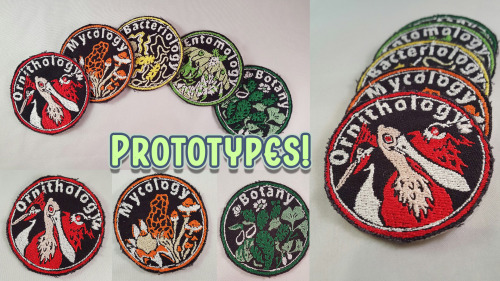




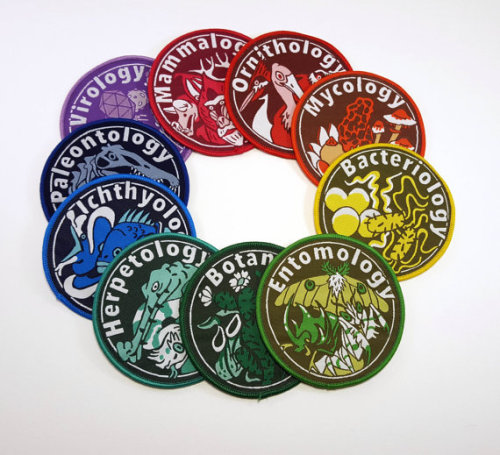
BIG UPDATE!
I’ve finally finished my biological patches set! After many months of designing, editing, and trial and error, I’m proud to post up photos of the final products!
They are woven with bright, beautiful colors that will endure many washes and adventures to come. They’re only $8 in my store:
https://www.etsy.com/shop/Monsternium
Here are the first five patches in my biological patch set. Once all ten are made, the rainbow of studies will be complete! Each one is illustrated, digitized, and embroidered by me. Stay tuned for more! Next up is herpetology ;)
Hit me with a cool fact of the brain!(short if possible?I have duslexia)Thanks!✨
Ok from where you’re sitting right now I want you to try and slowly scan the room from left to right in one smooth motion. It’s not possible- instead, your eyes move along in little jumps called saccades. Now I want you to lift your pointer finger up and move it along from left to right, following it with your eyes. You’ll now notice your eyes no longer move in saccades but follow your finger in a swift motion known as a “smooth pursuit”. This movement allows our eyes to closely follow a moving object and evolved to aid us in catching prey or keep away from predators. Autistic people, abuse victims and those under the influence of alcohol or drugs often show a lack or defecit of smooth pursuit.
Major types of Engines
Straight In-line
This is the type of engine that you find in your quotidian car. Nothing fancy, just all pistons arranged parallel along the vertical direction.

V in-line
Now, this is the sort of the engine that you find on sports cars like the Ferrari. When you hear sports enthusiasts go ‘ Whoa, that’s a V-12! ‘ - it just means that the engine has a V-type arrangement with 12 cylinders.

V + Inline = V-inline
Commonly referred to as the VR engine.
The name VR6 comes from a combination of V engine (German: V-Motor), and the German word “Reihenmotor” (meaning “inline engine” or “straight engine”)

Volkswagen’s VR6 engines, and the later VR5 variants, are a family of internal combustion engines, characterized by a narrow-angle (10.5° or 15°) V engine configuration.

a: straight engine, b: V engine, c: VR engine
W engine
A W engine is a type of reciprocating engine ( again created by Volkswagen) arranged with its cylinders in a configuration in which the cylinder banks resemble the letter W, in the same way those of a V engine resemble the letter V.

A W16 engine is used on the Bugatti Veyron. That’s 16 cylinders!
Flat Engine
Flat engines offer several advantages for motorcycles, namely: a low centre of gravity, smoothness, suitability for shaft drive, and (if air-cooled) excellent cooling of the cylinders. You can find them on aircrafts as well

Radial Engine (aka the dancing starfish)
They were used mostly in small aircraft for the propeller
The big advantage of radials was their large frontal area, which meant they could be air cooled, meaning less maintenance, failures, and of course a lower cost of initial purchase and maintenance.

Wankel Engine
This engine has only 3 moving parts and can make a lot of power.However, they are pretty inefficient, the last car to use this was a Mazda RX-8.

Axial Engine

The axial engine is a very interesting design. But they are not widely used because they are just hard to make and running these things at high RPM’s is a challenge.
Duke engines are equipped with this type.
Jet engine
Commonly jet engines refer to the engines that are found on, well Jets!
Air is sucked in through the front and squeezed. A controlled explosion follows and the exhaust is blown out through the back

But, Jet engines also include the engines that are found on rockets, hybrids and water-jets. And their mode of operation is different than the one mentioned above.
Pretty cool eh?
Have a great day!
PC: Howstuffworks, Duke, MichaelFrey, Azure.km
** There is also the Stirling Engine. It’s amazing and a topic for an another post. But if you are interested do check out more about it here.
EDIT : Had forgotten about the VR and the W-engines. My bad! Thanks for pointing it out.:D
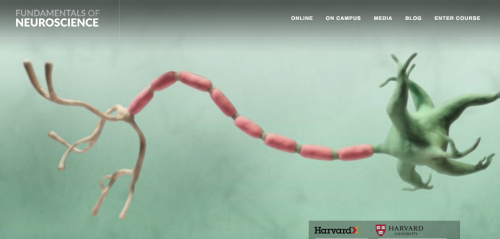
Harvard University offers a completely free online course on the Fundamentals of Neuroscience that you can get a certificate for successfully completing and which requires nothing other than basic knowledge in Biology and Chemistry. This excites me! Here’s the website
New Evidence in Mice That Cocaine Makes Brain Cells Cannibalize Themselves
Working with mice, researchers at Johns Hopkins have contributed significant new evidence to support the idea that high doses of cocaine kill brain cells by triggering overactive autophagy, a process in which cells literally digest their own insides. Their results, moreover, bring with them a possible antidote, an experimental compound dubbed CGP3466B.
A summary of the study, which also found signs of autophagy in the brain cells of mice whose mothers received cocaine while pregnant, was published online the week of Jan. 18 in the Proceedings of the National Academy of Sciences.

(Image caption: A neural cell from a mouse brain shows much larger, more numerous vacuoles (orange) after 3 hours of treatment with cocaine than untreated cells. Credit: Prasun Guha, Maged Harraz, Solomon Snyder)

(Image caption: An untreated neural cell from a mouse brain shows no vacuoles. Credit: Prasun Guha, Maged Harraz, Solomon Snyder)
“We performed ‘autopsies’ to find out how cells die from high doses of cocaine,” says Solomon Snyder, M.D., professor of neuroscience at the Johns Hopkins University School of Medicine. “That information gave us immediate insight into how we might use a known compound to interfere with that process and prevent the damage.”
After discovering in 1990 that brain cells use the gas nitric oxide to communicate, Snyder and his research team have spent decades studying its impact. In 2013, the team found that nitric oxide is involved in cocaine-induced cell death through its interactions with GAPDH, an enzyme, but didn’t learn how precisely the cells were dying.
To find out, the research team examined nerve cells from mouse brains for clues. Snyder says cells, like whole animals, can die from extreme temperatures, toxins and physical trauma, but can also commit “suicide” in three ways that are chemically programmed and controlled by different proteins.
One such way is autophagy, a normal and much-needed cellular “cleanup process” that rids cells of debris that accumulates in membrane-enclosed vacuoles, or “bags” within the cell. These bags fuse with other bags, enzyme-rich lysosomes, which are filled with acids that degrade the contents of the vacuoles. Only when this process accelerates and spins out of control does it cause cell death, Snyder explains.
By measuring changes in the levels of proteins that control each cell death program and by observing the cells’ physical changes, the team saw clearly that cocaine causes neuronal cell death through out-of-control autophagy. That confirmed previous results from two other groups that found cocaine-induced autophagy in astrocytes and microglia, which are neuron support cells.
“A cell is like a household that is constantly generating trash,” says Prasun Guha, Ph.D., postdoctoral fellow at Johns Hopkins and lead author of the paper. “Autophagy is the housekeeper that takes out the trash — it’s usually a good thing. But cocaine makes the housekeeper throw away really important things, like mitochondria, which produce energy for the cell.”
Because the team already knew that nitric oxide and GAPDH were involved in the process, they tested the ability of the compound CGP3466B, known to disrupt nitric oxide/GAPDH interactions, to halt cocaine-induced autophagy. They also tested other chemicals known to prevent the other two forms of cellular suicide, but only CGP3466B protected mouse nerve cells in the brain from death by cocaine.
According to previous research from the same team, CGP3466B was also able to rescue the brain cells of live mice from the deadly effects of cocaine, but they had not connected the phenomenon to autophagy. When the scientists recently gave mice a single dose of cocaine and looked for signs of autophagy in their brain cells, they detected autophagy-associated proteins and changes in vacuoles in adults and in mouse pups whose mothers had received cocaine while pregnant.
“Since cocaine works exclusively to modulate autophagy versus other cell death programs, there’s a better chance that we can develop new targeted therapeutics to suppress its toxicity,” says Maged M. Harraz, Ph.D., a research associate at Johns Hopkins and lead co-author of the paper.
Snyder says the team hopes its work will eventually lead to treatments that protect adults and infants from the devastating effects of cocaine on the brain. Since CGP3466B has already been tested in phase II clinical trials to (unsuccessfully) treat Parkinson’s disease and ALS, it is known to be safe for humans, but the researchers caution that many more years of studies are needed to definitively show whether it is effective for preventing cocaine damage, first in mice, then in humans. They also want to create and test derivatives of CGP3466B to learn more about cocaine-induced autophagy and see if cocaine is killing any cells outside the brain.
-
 pasparal liked this · 1 year ago
pasparal liked this · 1 year ago -
 dithology liked this · 4 years ago
dithology liked this · 4 years ago -
 boysf-ingsuck reblogged this · 4 years ago
boysf-ingsuck reblogged this · 4 years ago -
 tiny-floating-whales reblogged this · 5 years ago
tiny-floating-whales reblogged this · 5 years ago -
 notatypicaldimension reblogged this · 5 years ago
notatypicaldimension reblogged this · 5 years ago -
 muse-what-are-you-doing reblogged this · 6 years ago
muse-what-are-you-doing reblogged this · 6 years ago -
 mewmewatlantis liked this · 6 years ago
mewmewatlantis liked this · 6 years ago -
 starayarussa liked this · 6 years ago
starayarussa liked this · 6 years ago -
 wachsurfer2018 liked this · 6 years ago
wachsurfer2018 liked this · 6 years ago -
 inkblackshadows reblogged this · 7 years ago
inkblackshadows reblogged this · 7 years ago -
 liptonrm reblogged this · 7 years ago
liptonrm reblogged this · 7 years ago -
 the-nomadic-writer liked this · 7 years ago
the-nomadic-writer liked this · 7 years ago -
 upadanatu liked this · 7 years ago
upadanatu liked this · 7 years ago -
 berta-fly reblogged this · 7 years ago
berta-fly reblogged this · 7 years ago -
 opticalexample reblogged this · 7 years ago
opticalexample reblogged this · 7 years ago -
 lurking-for-fun liked this · 7 years ago
lurking-for-fun liked this · 7 years ago -
 abhikill007 liked this · 7 years ago
abhikill007 liked this · 7 years ago -
 monaxikos-skantzoxoiros reblogged this · 7 years ago
monaxikos-skantzoxoiros reblogged this · 7 years ago -
 fl0w-ing-blog liked this · 7 years ago
fl0w-ing-blog liked this · 7 years ago -
 croquis liked this · 7 years ago
croquis liked this · 7 years ago -
 cursinginchurch reblogged this · 7 years ago
cursinginchurch reblogged this · 7 years ago -
 sy5starplaty reblogged this · 7 years ago
sy5starplaty reblogged this · 7 years ago -
 gathered-rosebud reblogged this · 7 years ago
gathered-rosebud reblogged this · 7 years ago -
 evil5isabell-blog liked this · 7 years ago
evil5isabell-blog liked this · 7 years ago -
 alaricethemagpie reblogged this · 7 years ago
alaricethemagpie reblogged this · 7 years ago -
 nochancetowinbutnotrunning liked this · 7 years ago
nochancetowinbutnotrunning liked this · 7 years ago -
 adorabilityinitiative liked this · 7 years ago
adorabilityinitiative liked this · 7 years ago -
 leonard-cohen-the-second liked this · 7 years ago
leonard-cohen-the-second liked this · 7 years ago -
 rat-a-tit liked this · 7 years ago
rat-a-tit liked this · 7 years ago -
 captain-marvels reblogged this · 7 years ago
captain-marvels reblogged this · 7 years ago -
 codican reblogged this · 7 years ago
codican reblogged this · 7 years ago -
 schadenfreudessa reblogged this · 7 years ago
schadenfreudessa reblogged this · 7 years ago -
 spartanxiv liked this · 7 years ago
spartanxiv liked this · 7 years ago -
 thedreadpiratecat reblogged this · 7 years ago
thedreadpiratecat reblogged this · 7 years ago -
 mymetaphorwasdrawnfrombees liked this · 7 years ago
mymetaphorwasdrawnfrombees liked this · 7 years ago -
 magnetic-terp-input reblogged this · 7 years ago
magnetic-terp-input reblogged this · 7 years ago -
 apostateprostitutes reblogged this · 7 years ago
apostateprostitutes reblogged this · 7 years ago -
 paper-vi0lets liked this · 7 years ago
paper-vi0lets liked this · 7 years ago -
 atracaelum liked this · 7 years ago
atracaelum liked this · 7 years ago -
 hajikelist reblogged this · 7 years ago
hajikelist reblogged this · 7 years ago -
 silverblue94 liked this · 7 years ago
silverblue94 liked this · 7 years ago







